Welcome to the Era of Light Shows and Military Drone Swarm Technology
Drone swarms represent a cutting-edge fusion of robotics, artificial intelligence, and communication technology, embodying a paradigm shift in both civilian and defense applications—their ability to operate collectively as a unified entity rather than as individual units has unlocked unprecedented capabilities. From dazzling light shows that grace our skies during festivities to complex military operations that enhance strategic advantages, drone swarms demonstrate a versatile and transformative potential. Central to their functionality and success is the underlying connectivity infrastructure, notably advanced systems like Rajant Kinetic Mesh® networking technology. Let’s examine the capabilities of drone swarms, their growing popularity in various fields, and the indispensable role of the dynamic connectivity solutions behind them.
Capabilities of Drone Swarms
Drone swarms leverage the principle of collective behavior, where numerous drones coordinate their actions to accomplish complex tasks. This capability is rooted in their ability to communicate, share data, and react to environmental stimuli in real time. The primary capabilities of drone swarms include:
- Coordinated Movement: Drone swarms can perform intricate maneuvers by communicating and adjusting their positions relative to one another. This coordination allows for dynamic formation flying, which is pivotal in applications ranging from synchronized light displays to complex search and rescue missions.
- Distributed Sensing: Swarms can cover vast areas and simultaneously gather data from multiple sensors. This capability enhances situational awareness, enabling detailed mapping, environmental monitoring, and disaster assessment.
- Redundancy and Reliability: In a swarm, the failure of individual drones does not compromise the overall mission. This redundancy ensures high reliability, making swarms ideal for critical operations where robustness is essential.
- Scalability: Swarms can scale quickly by adding or removing drones, offering flexibility in mission planning and execution. This scalability is crucial for adapting to different operational requirements and environmental conditions.
- Task Specialization: Drones within a swarm can be assigned specific roles based on their capabilities, such as surveillance, communication relays, or payload delivery. This specialization enhances the swarm’s efficiency and effectiveness.
Increasing Popularity in Light Shows and Military Environments
The application of drone swarms has surged in popularity due to their versatility and spectacular capabilities in various domains.
Light Shows
Drone swarms have revolutionized the concept of aerial displays, replacing traditional fireworks with eco-friendly, highly precise, and programmable light shows. These swarms create breathtaking visual spectacles by coordinating thousands of drones equipped with LED lights, forming intricate patterns, animations, and logos in the night sky. Notable examples include:
- Olympic Ceremonies: Drone swarms have been featured in opening ceremonies of major sporting events, showcasing national symbols and cultural motifs.
- Holiday Celebrations: Many cities have opted for aerial drone shows over traditional firework displays to celebrate holidays, much like the upcoming Fourth of July. This allows for a quieter celebration and greater creativity in the visual demonstration.
- Entertainment: Major companies use drone swarms for promotional events and theme park shows, offering a unique and mesmerizing audience experience.
The precision and synchronization of these light shows are made possible by the seamless communication between drones, enabled by advanced connectivity solutions.
Military Applications
In military contexts, drone swarms provide a strategic edge by enhancing operational capabilities and reducing risks to human personnel. The DARPA OFFSET program exemplifies the potential of drone swarms in defense, focusing on developing collaborative autonomous systems to support ground forces in urban warfare. Key military applications include:
- Surveillance and Reconnaissance: Swarms can perform persistent surveillance over vast areas, providing real-time intelligence and situational awareness.
- Electronic Warfare: Drone swarms can disrupt enemy communications and radar systems through coordinated electronic attacks.
- Decoy Operations: Swarms can simulate larger forces, confusing adversaries and drawing their attention away from actual operations.
- Ordnance/Supply Delivery: Swarms can autonomously deliver supplies to troops in remote or hostile environments, ensuring continuous logistical support. There have also been many recent cases of drones delivering payloads to remote targets.
The Role of Dynamic Connectivity Solutions
The capabilities of drone swarms could only be attainable with robust and dynamic connectivity solutions. Rajant Kinetic Mesh networking technology is a pivotal enabler of these capabilities, offering continuous mobile connectivity essential for machine-to-machine (M2M) communications. Rajant BreadCrumb® nodes, which are deployable directly on mobile assets, provide several critical advantages:
- Continuous Connectivity: Rajant’s network supports uninterrupted communication among drones, allowing them to maintain formation, exchange data, and coordinate actions even in challenging environments.
- Multi-Frequency Operation: The multi-frequency BreadCrumbs® can hold multiple connections simultaneously, ensuring robust and redundant links. This capability is crucial for maintaining communication in environments with high interference or physical obstacles.
- Peer-to-Peer Networking: Rajant’s technology enables drones to communicate directly with each other in a peer-to-peer manner. This decentralized approach enhances the swarm’s resilience and adaptability, as drones can reconfigure their communication links dynamically based on the situation.
- Fault-Tolerant Performance: The fault-tolerant design ensures that the swarm remains operational even if some nodes fail or are compromised. This reliability is vital for mission-critical applications where uptime and continuity are paramount.
Drone swarms are at the forefront of technology innovation, with their capabilities transforming both the entertainment and military sectors. The sophisticated coordination, distributed sensing, and resiliency of swarms offer immense advantages in various applications. However, these capabilities inherently depend on advanced connectivity solutions like Rajant Kinetic Mesh. Solution providers, like Rajant, enable drone swarms to operate effectively and unlock their full potential by providing continuous, dynamic, and fault-tolerant connectivity. As drone technology evolves, robust connectivity will remain a cornerstone in realizing the vision of autonomous and intelligent swarms.













